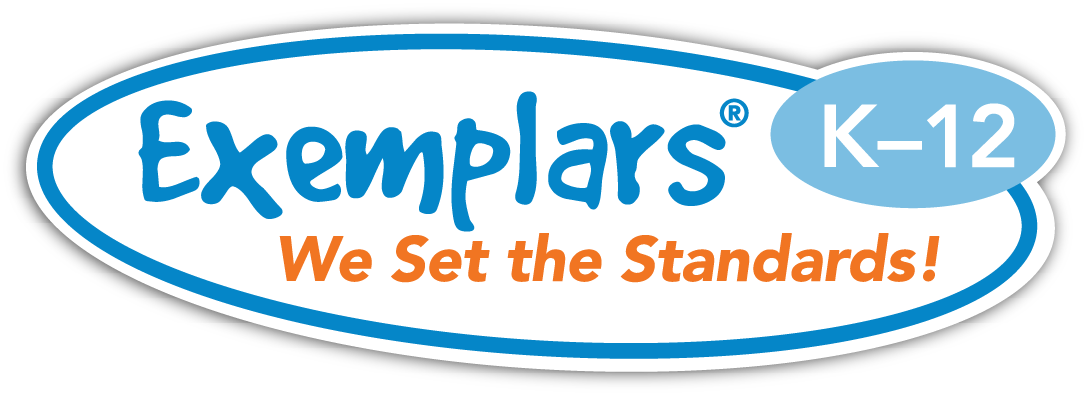From Silence to Strategy
Letting Student Voice Lead in Math Classrooms
By Dr. Elly Blanco-Rowe, Senior Director of Curriculum and Instruction, STEM | Exemplars Ambassador

In classrooms powered by Exemplars, students aren’t quietly completing tasks in isolation; they’re engaged in conversation, revisiting ideas, and challenging each other’s thinking. They’re not just solving problems; they are being strategic and learning how to think mathematically. As a district leader responsible for STEM instruction, I look for tools that drive both rigor and access. Exemplars delivers both. These performance tasks aren’t just aligned to standards; they’re grounded in real-world contexts and designed to promote reasoning, collaboration, and communication. They help students make sense of mathematics, not just memorize procedures.
"I look for tools that drive both rigor and access. Exemplars delivers both."
Equity in Action
Many approaches to instruction provide routines for engaging students and elevating their voices. With Exemplars, students who once stayed silent during math lessons are now leading discussions. They aren’t following a script; they are exploring multiple strategies, reflecting on their thinking, and learning to articulate their reasoning clearly. That kind of engagement isn’t surface-level; it’s transformational.
Equity in action is a proactive process where every student, regardless of background, is given space to participate meaningfully. Exemplars raises the floor by creating access to complex thinking. It challenges fast finishers to slow down and explain, and it gives hesitant students a structure that supports entry into the task. In both cases, students grow.
When classrooms shift from compliance to conversation, students stop performing for correctness and start thinking for understanding. And as I’ve seen time and again in the Exemplars classrooms, that’s when real, lasting learning takes root.
"When classrooms shift from compliance to conversation, students stop performing for correctness and start thinking for understanding."
Supporting Teachers, Seeing Potential
One of the most rewarding parts of my role is watching teachers see how their students begin to engage with mathematics differently. It often happens during a debrief after an Exemplars task. A teacher will pause, reflect, and say something like, “I didn’t know they could think like that.” or “X, Y, Z students usually shut down but were able to demonstrate their thinking and transfer the learning from class this week.” When teachers begin to recognize that every student has mathematical ideas worth sharing, the whole culture of a classroom changes.
Exemplars have helped shift how we think about student potential. These tasks don’t just test skills; they reveal thinking. I often find that teachers have the most difficulty uncovering potential misconceptions, and through Exemplars tasks and planning, we’re able to surface insights into student comprehension we may not have expected. This isn’t about mastering a protocol or delivering a perfect lesson. It’s about creating the conditions for deep thinking. That includes modeling reflection, welcoming mistakes, and valuing the process as much as the outcome.
As a system leader, I’ve seen how powerful that shift can be–not just for students, but for the educators guiding them. When teachers witness what their students are capable of, their expectations rise. And that mindset change is just as critical as any instructional move.
"When students leave the classroom feeling capable, curious, and confident, they carry that mindset into every other part of their learning and life."
Classrooms That Are Truly Alive
The most powerful classrooms I’ve seen aren’t the quietest. They’re the ones filled with purposeful noise—students explaining, justifying, questioning. Exemplars help create that kind of environment. When students are given meaningful problems and the structure to explore them deeply, the room shifts. The focus moves from right answers to real thinking. From passive compliance to active discovery.
In these classrooms, scratch paper covers the desks. Students test strategies, debate approaches, and circle back to revise. It’s not always neat, but it’s always alive. That’s the kind of math education I believe in. One where success is measured in growth, not just correctness. Where struggle is productive, not punishing. Where students don’t just learn math, they learn that they are mathematical thinkers. And that matters. When students leave the classroom feeling capable, curious, and confident, they carry that mindset into every other part of their learning and life.
Let’s keep building classrooms like that, places where every student gets the chance to be seen, heard, and challenged. Where silence gives way to strategy, and math truly comes alive.


